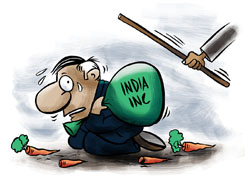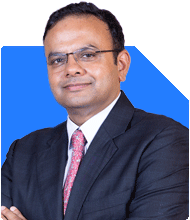Need Expert Advice?Our Gurus Can Help

Ramalingam Kalirajan5367 Answers |Ask - Follow
Mutual Funds, Financial Planning Expert - Answered on Jul 23, 2024
Asked on - Apr 09, 2024Hindi
Ramalingam Kalirajan5367 Answers |Ask - Follow
Mutual Funds, Financial Planning Expert - Answered on Jul 15, 2024
Asked on - Jul 07, 2024Hindi
Ramalingam Kalirajan5367 Answers |Ask - Follow
Mutual Funds, Financial Planning Expert - Answered on Jul 02, 2024
Asked on - Jul 02, 2024Hindi
Ramalingam Kalirajan5367 Answers |Ask - Follow
Mutual Funds, Financial Planning Expert - Answered on May 31, 2024
Asked on - May 31, 2024Hindi
Ramalingam Kalirajan5367 Answers |Ask - Follow
Mutual Funds, Financial Planning Expert - Answered on May 26, 2024
Asked on - Feb 05, 2024Hindi
Ramalingam Kalirajan5367 Answers |Ask - Follow
Mutual Funds, Financial Planning Expert - Answered on May 06, 2024
Asked on - Apr 09, 2024Hindi
Ramalingam Kalirajan5367 Answers |Ask - Follow
Mutual Funds, Financial Planning Expert - Answered on May 01, 2024
Asked on - Apr 30, 2024Hindi
Ramalingam Kalirajan5367 Answers |Ask - Follow
Mutual Funds, Financial Planning Expert - Answered on Apr 24, 2024
Asked on - Jan 02, 2024Hindi
Ramalingam Kalirajan5367 Answers |Ask - Follow
Mutual Funds, Financial Planning Expert - Answered on Apr 23, 2024
Asked on - Jan 02, 2024Hindi
Samraat Jadhav1893 Answers |Ask - Follow
Stock Market Expert - Answered on Apr 23, 2024
Asked on - Apr 17, 2024Hindi
Ramalingam Kalirajan5367 Answers |Ask - Follow
Mutual Funds, Financial Planning Expert - Answered on Apr 18, 2024
Asked on - Dec 02, 2023Hindi
Ramalingam Kalirajan5367 Answers |Ask - Follow
Mutual Funds, Financial Planning Expert - Answered on Apr 17, 2024
Asked on - Jan 02, 2024Hindi
Samraat Jadhav1893 Answers |Ask - Follow
Stock Market Expert - Answered on Apr 12, 2024
Asked on - Apr 08, 2024Hindi

Samraat Jadhav1893 Answers |Ask - Follow
Stock Market Expert - Answered on Apr 08, 2024
Asked on - Apr 08, 2024Hindi

https://www.sebi.gov.in/sebiweb/other/OtherAction.do?doRecognisedFpi=yes&intmId=13
Ramalingam Kalirajan5367 Answers |Ask - Follow
Mutual Funds, Financial Planning Expert - Answered on Apr 05, 2024
Asked on - Jan 02, 2024Hindi

Vivek Lala257 Answers |Ask - Follow
Tax, MF Expert - Answered on Mar 12, 2024
Asked on - Dec 02, 2023Hindi

In order to get 10crs after 25yrs, your sip has to be 53K assuming a XIRR of 12%
Please note that these suggestions are based on your stated goals and the information you provided. It is always a good idea to consult with a financial advisor in person to better understand your risk tolerance, time horizon, and specific financial goals.
Also step up of sip should be done whenever your income goes up and not specifically every year or every two years
Jinal Mehta93 Answers |Ask - Follow
Financial Planner - Answered on Feb 25, 2024
Asked on - Feb 13, 2024Hindi
Sunil Lala193 Answers |Ask - Follow
Financial Planner - Answered on Jan 19, 2024
Asked on - Dec 02, 2023Hindi
Sanjeev Govila458 Answers |Ask - Follow
Financial Planner - Answered on Dec 25, 2023
Asked on - Dec 02, 2023Hindi
Abhishek Dev57 Answers |Ask - Follow
Financial Planner - Answered on Nov 17, 2023
Asked on - Nov 12, 2023Hindi
Dev Ashish48 Answers |Ask - Follow
MF Expert, Financial Planner - Answered on Oct 21, 2023
Asked on - Oct 21, 2023Hindi
Abhishek Dev57 Answers |Ask - Follow
Financial Planner - Answered on Oct 03, 2023
Asked on - Oct 02, 2023Hindi
Sanjeev Govila458 Answers |Ask - Follow
Financial Planner - Answered on Jul 23, 2023
Asked on - Jul 17, 2023Hindi
Sanjeev Govila458 Answers |Ask - Follow
Financial Planner - Answered on Jun 07, 2023
Asked on - Jun 07, 2023Hindi










.jpg)











